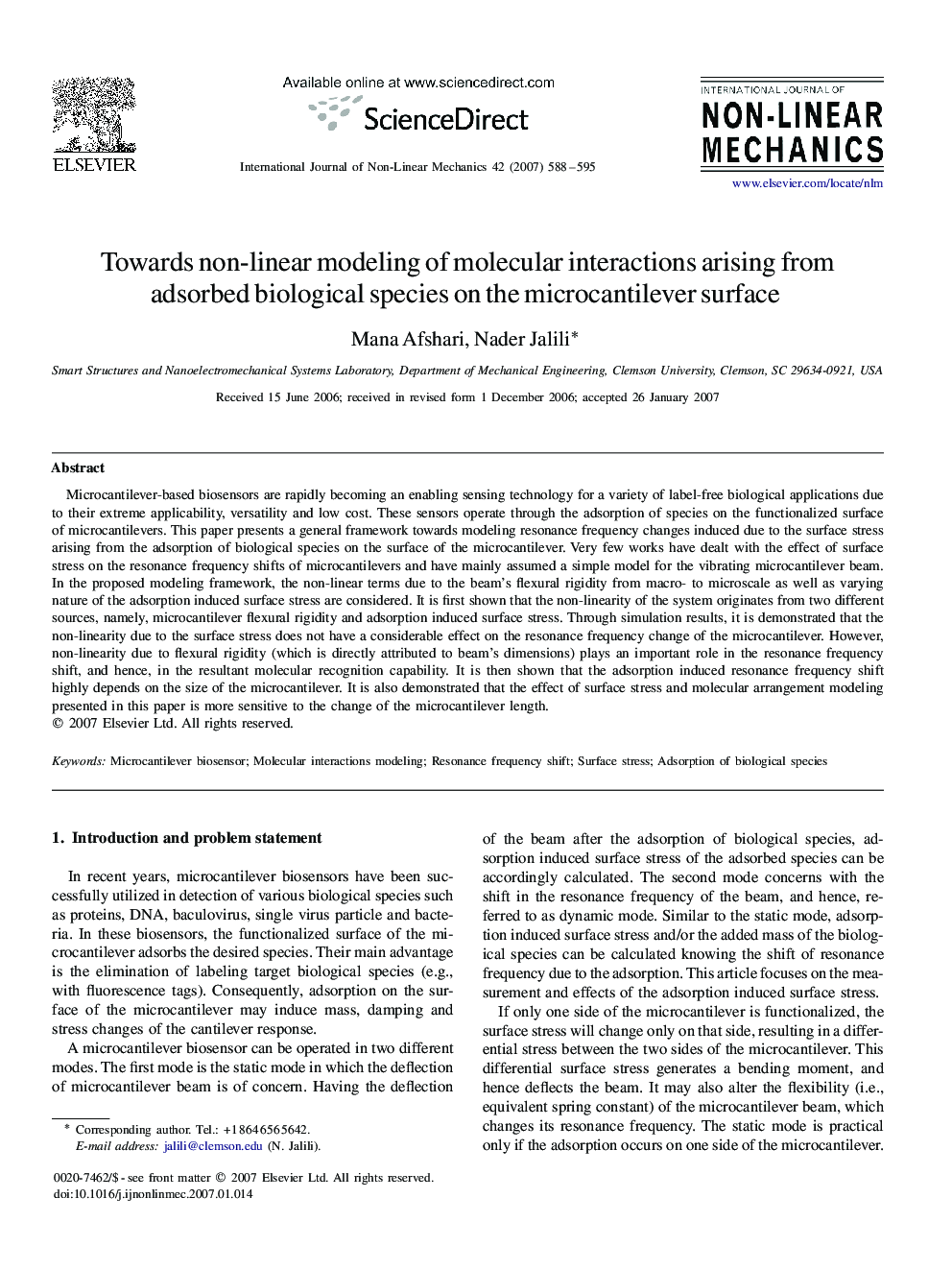| Article ID | Journal | Published Year | Pages | File Type |
|---|---|---|---|---|
| 785182 | International Journal of Non-Linear Mechanics | 2007 | 8 Pages |
Microcantilever-based biosensors are rapidly becoming an enabling sensing technology for a variety of label-free biological applications due to their extreme applicability, versatility and low cost. These sensors operate through the adsorption of species on the functionalized surface of microcantilevers. This paper presents a general framework towards modeling resonance frequency changes induced due to the surface stress arising from the adsorption of biological species on the surface of the microcantilever. Very few works have dealt with the effect of surface stress on the resonance frequency shifts of microcantilevers and have mainly assumed a simple model for the vibrating microcantilever beam. In the proposed modeling framework, the non-linear terms due to the beam's flexural rigidity from macro- to microscale as well as varying nature of the adsorption induced surface stress are considered. It is first shown that the non-linearity of the system originates from two different sources, namely, microcantilever flexural rigidity and adsorption induced surface stress. Through simulation results, it is demonstrated that the non-linearity due to the surface stress does not have a considerable effect on the resonance frequency change of the microcantilever. However, non-linearity due to flexural rigidity (which is directly attributed to beam's dimensions) plays an important role in the resonance frequency shift, and hence, in the resultant molecular recognition capability. It is then shown that the adsorption induced resonance frequency shift highly depends on the size of the microcantilever. It is also demonstrated that the effect of surface stress and molecular arrangement modeling presented in this paper is more sensitive to the change of the microcantilever length.
